Related Research Articles
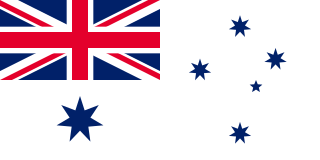
The Royal Australian Navy (RAN) is the naval branch of the Australian Defence Force (ADF). The professional head of the RAN is Chief of Navy (CN) Vice Admiral Mark Hammond AM, RAN. The Chief of Navy is also jointly responsible to the Minister for Defence (MINDEF) and the Chief of the Defence Force (CDF). The Department of Defence, which is a part of the Australian Public Service, administers the ADF, and ergo, the Royal Australian Navy. In 2023, the Surface Fleet Review was introduced to outline the future of the Navy.

The Australian Defence Force (ADF) is the military organisation responsible for the defence of the Commonwealth of Australia and its national interests. It has three branches: the Royal Australian Navy (RAN), Australian Army and the Royal Australian Air Force (RAAF). The ADF has a strength of just over 89,000 personnel and is supported by the Department of Defence alongside other civilian entities.

A coast guard or coastguard is a maritime security organization of a particular country. The term embraces wide range of responsibilities in different countries, from being a heavily armed military force with customs and security duties to being a volunteer organization tasked with search and rescue without law enforcement authority. In most countries, a typical coast guard's functions are distinct from those of the navy and the transit police, while in certain countries they have similarities to both.
Responsibilities for traditional coast guard duties in Australia are distributed across various federal, state and community agencies. The de facto coast guard of Australia is the Maritime Border Command, a joint command of the Australian Defence Force and the Australian Border Force which works alongside the Australian Federal Police, the Australian Fisheries Management Authority, and the Australian Maritime Safety Authority. Each state and territory government have specific maritime safety agencies and police marine units. In addition, there are several private volunteer coast guard organisations which act as auxiliary search and rescue services and maritime safety educators with the largest organisations being the Royal Volunteer Coastal Patrol established in 1937, the Australian Volunteer Coast Guard established in 1961, and Marine Rescue New South Wales established in 2009.
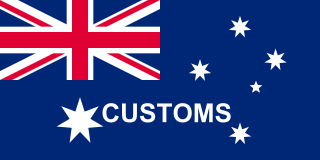
The Australian Customs and Border Protection Service was an Australian federal government agency responsible for managing the security and integrity of the Australian border and facilitating the movement of legitimate international travellers and goods, whilst protecting the safety, security and commercial interests of Australians. It was headquartered in Canberra and employed over 5,800 people around Australia and overseas.
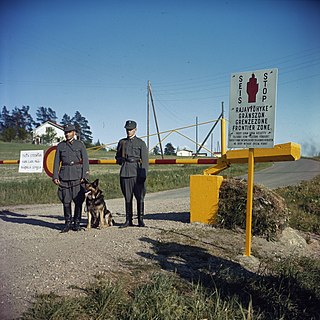
A border guard of a country is a national security agency that ensures border security. Some of the national border guard agencies also perform coast guard and rescue service duties.
The Australian Intelligence Community (AIC) and the National Intelligence Community (NIC) or National Security Community of the Australian Government are the collectives of statutory intelligence agencies, policy departments, and other government agencies concerned with protecting and advancing the national security and national interests of the Commonwealth of Australia. The intelligence and security agencies of the Australian Government have evolved since the Second World War and the Cold War and saw transformation and expansion during the Global War on Terrorism with military deployments in Afghanistan, Iraq and against ISIS in Syria. Key international and national security issues for the Australian Intelligence Community include terrorism and violent extremism, cybersecurity, transnational crime, the rise of China, and Pacific regional security.
The Australian Coastal Surveillance Organisation, also known as Coastwatch, was an operational division of the Australian Customs Service and the de facto Australian coast guard service. The former Coastwatch Division is now part of the Australian Border Force Maritime Border Command, a joint civil/military organisation responsible for civil maritime security.
Operation Resolute is the involvement of the Australian Defence Force (ADF) in Australian government efforts to prevent unauthorised entries to sovereign Australian territory. This has mainly taken the forms of: remote surveillance; air, sea and land patrols by ADF personnel; seizure of "suspected irregular entry vessels", and; locating/assisting people who have entered Australia via such a vessel. Operation Resolute began on 17 July 2006 and consolidated a number of previous ADF operations, including Operation Relex.
Surveillance Australia Pty Ltd is an Australian aviation company. It is primarily engaged in servicing the Australian Border Force Coastwatch contract, flying surveillance patrols within the Australian Exclusive Economic Zone (AEEZ).

The Bay class is a class of eight armed patrol boats, built by Austal and used by the Customs Marine Unit of the Australian Customs and Border Protection Service. They entered service during the late 1990s and early 2000s, and are primarily used on border protection duties.

The Marine Unit, formerly the Australian Customs Service National Marine Unit, is a division of the Australian Border Force which acts as a Coast Guard in guarding Australia's coast. The Marine Unit focuses on surveillance and response activities within the Australian Economic Exclusion Zone, and the operation and training of ships and crews to do so.

Vice Admiral Russell Harry Crane, is a retired senior officer of the Royal Australian Navy (RAN), who served as the Chief of Navy from July 2008 until his retirement in June 2011.
The Australian Defence Organisation (ADO) is composed of the armed forces of the Commonwealth of Australia, the Australian Defence Force (ADF), and the Australian Public Service government department, the Department of Defence which is composed of a range of civilian support organisations.

Combined Task Force 151 (CTF-151) is a multinational naval task force, set up in 2009 as a response to piracy attacks in the Gulf of Aden and off the eastern coast of Somalia. Its mission is to disrupt piracy and armed robbery at sea and to engage with regional and other partners to build capacity and improve relevant capabilities in order to protect global maritime commerce and secure freedom of navigation. It operates in conjunction with the EU's Operation Atalanta and NATO's Operation Ocean Shield.
Fleet Command is responsible for the command, operations, readiness, training and force generation of all ships, submarines, aircraft squadrons, diving teams, and shore establishments of the Royal Australian Navy. Fleet Command is headquartered at HMAS Kuttabul in Sydney, and is led by the Commander Australian Fleet (COMAUSFLT), also referred to as Fleet Commander Australia (FCAUST), which is a rear admiral (two-star) appointment.

The Pakistan Maritime Security Agency is a branch of the Pakistan Navy. It is a Navy-managed and Navy-controlled law enforcement agency whose mission is to provide protection to the Pakistan's maritime interests and enforcement of maritime law with jurisdiction over the domestic and international waters of Pakistan including the exclusive economic zone. Pakistan Maritime security agency should not be confused with Pakistan Coast Guards which is security force under Pakistan Army.
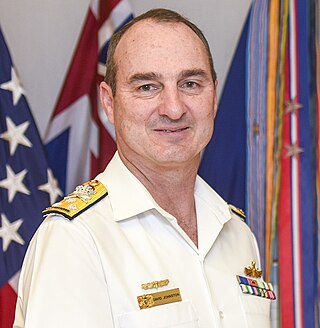
Admiral David Lance Johnston, is a senior officer in the Royal Australian Navy. He served as Deputy Commander Joint Task Force 633 on Operation Slipper in 2010, Commander Border Protection Command from 2011 to 2013 and, following promotion to vice admiral, was posted as Chief of Joint Operations from 2014 until 2018. Johnston was appointed Vice Chief of the Defence Force in July 2018. He was promoted to admiral and appointed Chief of the Defence Force on 10 July 2024.

Rear Admiral Allan Kendall du Toit, is a retired senior officer of the Royal Australian Navy, who served as Australia's Military Representative to NATO and the European Union from 2013 until his retirement in 2016. Du Toit previously served as the Commander Border Protection Command until being succeeded by Rear Admiral Tim Barrett in February 2010.
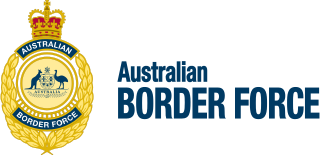
The Australian Border Force (ABF) is a federal law enforcement agency, part of the Department of Home Affairs, responsible for offshore and onshore border enforcement, investigations, compliance, detention operations and customs services in Australia. Through the ABF's Marine Unit, the ABF performs Coast Guard and marine law enforcement duties and is a component of the Maritime Border Command. The ABF is also part of the National Intelligence Community and is an active member of the World Customs Organization.
References
- ↑ "Maritime Border Command – Australian Border Force". Department of Immigration and Border Protection. Archived from the original on 20 December 2016. Retrieved 7 December 2016.
- 1 2 "Department of Immigration and Border Protection – Annual Report 2015–16" (PDF). Department of Immigration and Border Protection. Archived from the original (PDF) on 20 December 2016. Retrieved 7 December 2016.
- ↑ "Border Lengths - States and Territories". Geoscience Australia . Australian Government. 31 July 2014. Retrieved 5 August 2017.
- ↑ "Maritime Border Command's History – Australian Border Force". Department of Immigration and Border Protection. Retrieved 7 December 2016.